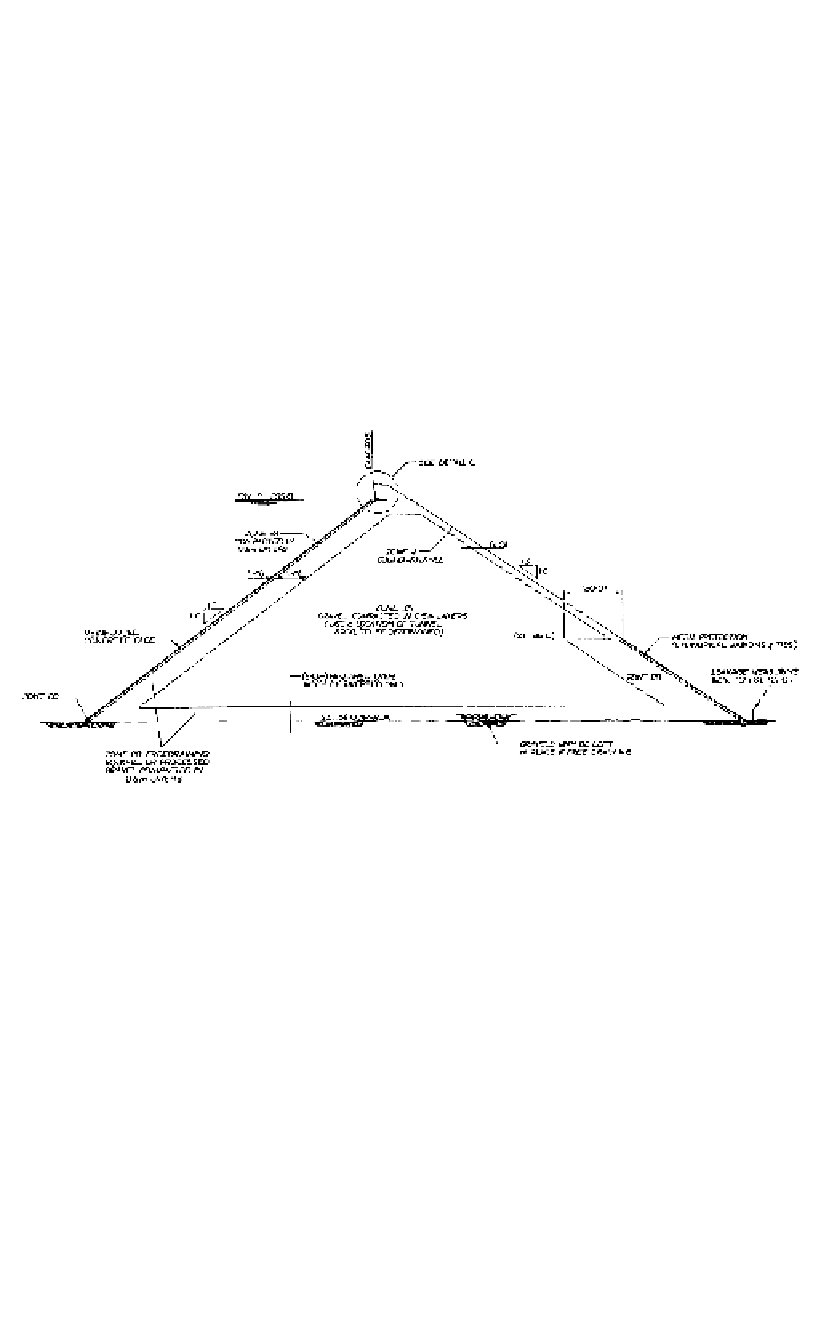Environmental Engineering Reference
In-Depth Information
Table 15.5.
Grading of river gravels used as “rockfill” in CFRD.
Dam, year (% passing)
Sieve size (mm)
Crotty, 1971
Golillas, 1978
Salvijina, 1984
Gouhou, 1992
300
100
100
100
100
85-100 (98)
(b)
150
60-100
65-100 (98)
100
75
34-98 (85)
35-80
35-100 (80)
60-100 (90)
25
26-70 (55)
20-50
10-80 (40)
55-90 (65)
4.76
6-42 (16)
10-30
0-30 (8)
25-65 (42)
1.18
2-22 (10)
4-22
0-25 (6)
15-45 (28)
0-12
(a)
0.075
0-4 (2)
0-12 (3)
5-10 (6)
Notes:
(a)
Average 8% for one source, 12% for second.
(b)
Average in brackets.
Figure 15.6.
Crotty Dam (HEC, 1988).
The Hydro-Electric Commission of Tasmania used gravels to construct the 82 m high
Crotty Dam in 1991 (Figure 15.6). The Golillas Dam gravels (
Figure 15.5
)
were made up of
70% sandstone, 20% siliceous shales and 10% siltstones and limestones. The gravels were
washed for drainage zones in the dam. Sierra, et al. (1985) describe the use of gravels in
Salvajina Dam in Colombia. The 148 m high dam had its “Zone 3A” constructed of grav-
els from gold mining dredging for Zone 2 as designated in
Figure 15.7
.
The range and average grading is given in
Figure 15.5
.
The gravels are usually placed in approximately 0.6 m thick layers and compacted with
4 passes of a 10 tonne steel drum vibratory roller, without water added. Water can make
compaction difficult if the gravels are silty.
Very high moduli can be obtained as shown in
Table 15.6
.
As pointed out by Cooke (1984) gravel has been successfully used in several high earth
and rockfill dams including Nurek (305 m), Oroville (244 m), Mica (244 m) and Bennett
(183 m). Moduli of 365 MPa for Oroville and 551 to 689 MPa for Bennett were achieved
despite use of smaller rollers than would now be adopted.
The Gouhou Dam in China (Chen, 1993) was constructed of gravel with a finer grad-
ing envelope than the earlier dams (Table 15.5). The zoning of this dam is shown on




